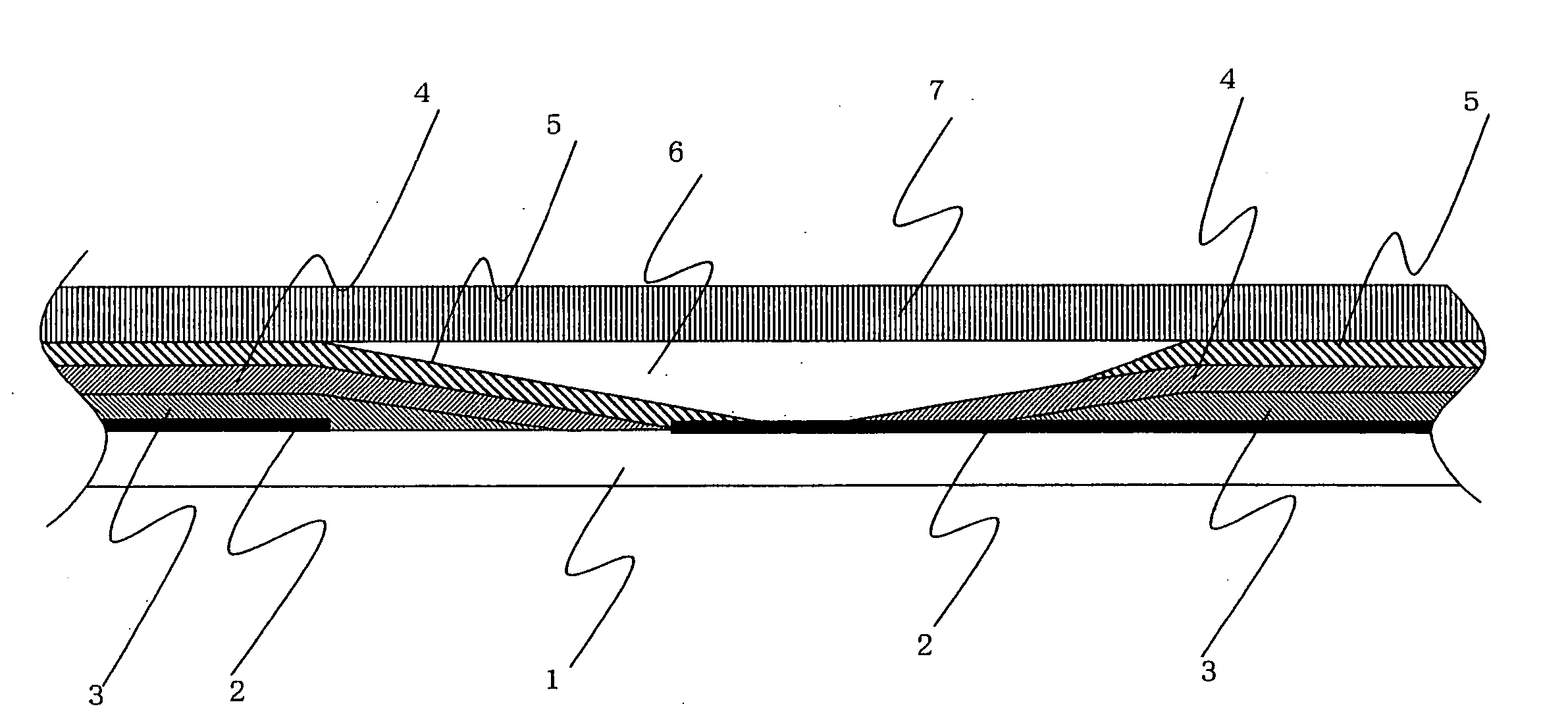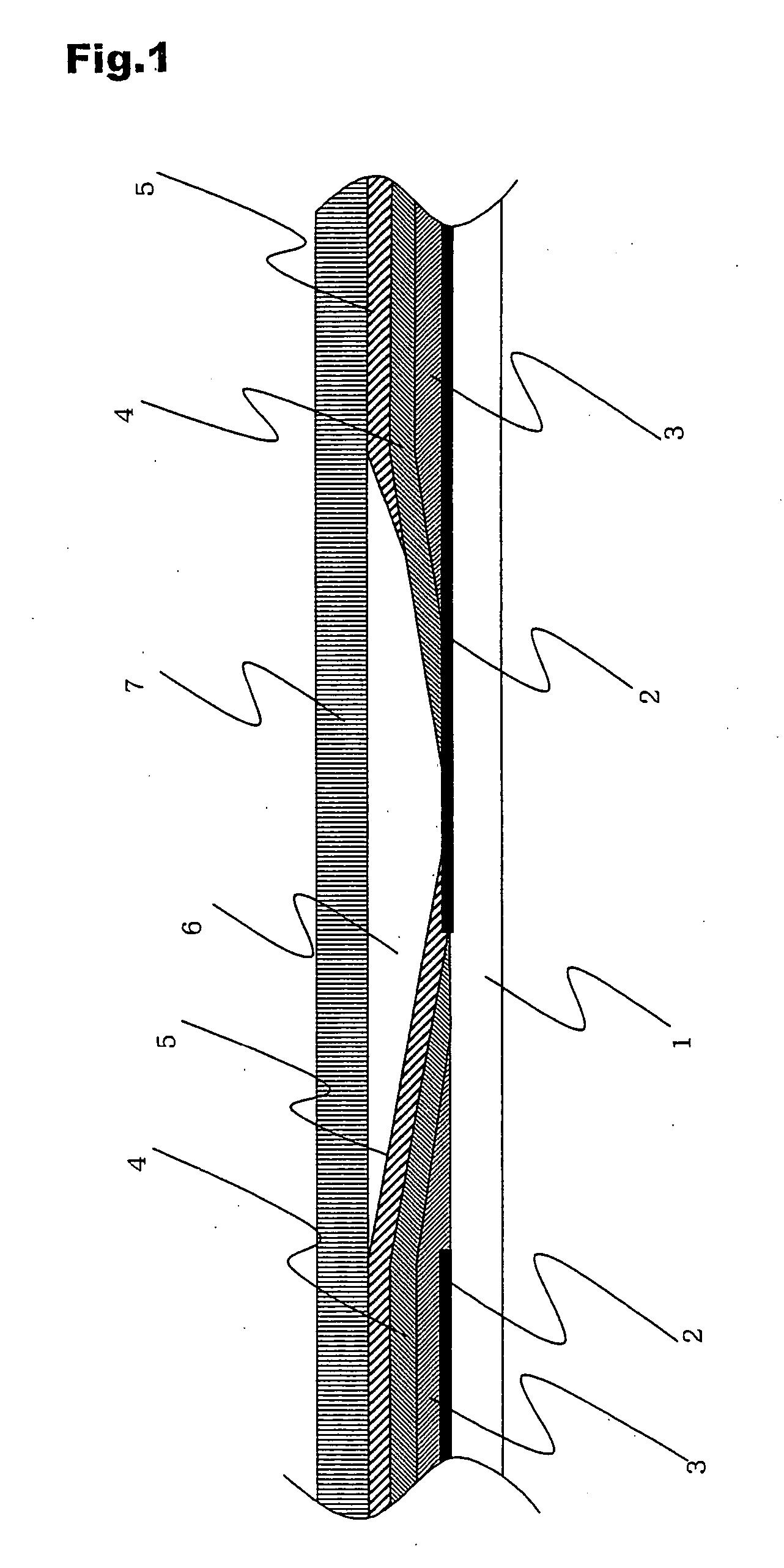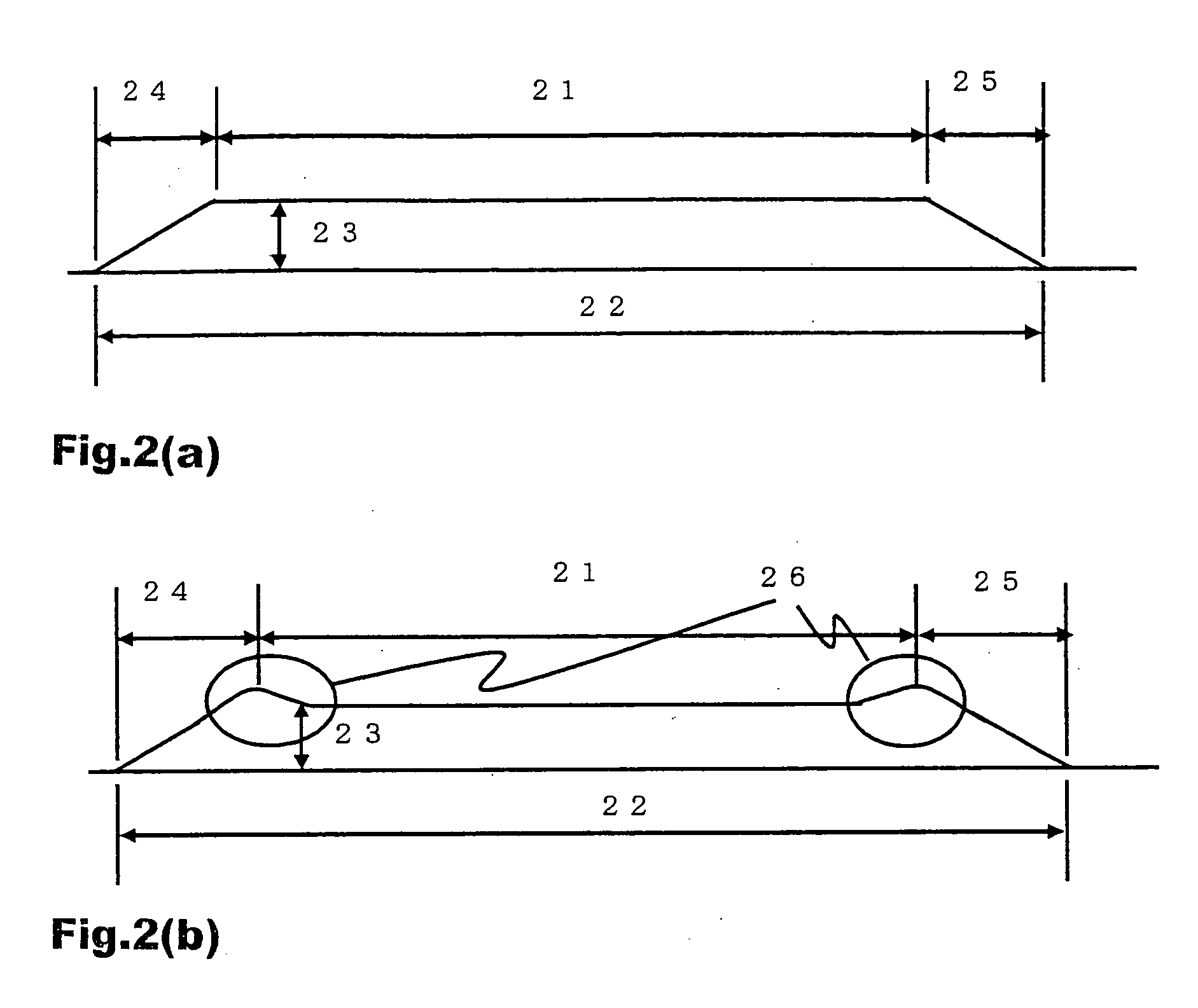Dye-sensitized solar cell and dye-sensitized solar cell module
a solar cell and dye-sensitized technology, applied in the direction of pv power plants, electrolytic capacitors, electrochemical generators, etc., can solve the problems of high manufacturing costs, unresolved problems, and high manufacturing costs of silicon substrates, and achieve solar cells, high efficiency, and easy manufacturing.
- Summary
- Abstract
- Description
- Claims
- Application Information
AI Technical Summary
Benefits of technology
Problems solved by technology
Method used
Image
Examples
example 1
[0100] An integrated dye-sensitized solar cell module was manufactured, such that 10 unit cells are connected in series. Manufacturing processes thereof are described below. A series connection portion is a structure shown in FIG. 1.
[0101] As a substrate, used was a glass substrate (first support 1) of 10 mm×10 mm, manufactured by Nippon Sheet Glass Co., Ltd., with fluorine-doped SnO2 (first conductive layer 2). SnO2 was irradiated with laser light (YAG laser, fundamental wavelength: 1.06 μm) so as to be in the shape of a strip having a width of 1.035 cm and a gap between adjacent unit cells of 350 μm, and then patterning was performed by vaporizing SnO2.
[0102] Next, a porous photovoltaic layer 3 after firing was manufactured by a screen printing machine so that a shape was 1 cm×9 cm, a film thickness was 15 μm, the shortest distance X between the intersection of the perpendicularly drawn from the surface edge of the confronted side of the porous photovoltaic layer to the contact ...
example 2
[0108] A dye-sensitized solar cell module having the porous photovoltaic layer 3 in which the dimensionless number K was 0.15 and the shortest distance X between the intersection of the perpendicularly drawn from the surface edge of the confronted side of the porous photovoltaic layer to the contact side of the porous photovoltaic layer and the surface edge of the contact side was 100 μm was manufactured in conformance with Example 1. The obtained dye-sensitized solar cell module had the short-circuit current density of 11.08 mA / cm2, the open-circuit voltage value was 6.50 V, the FF of 0.53 and the module conversion efficiency of 3.82%.
example 3
[0109] A dye-sensitized solar cell module having the porous photovoltaic layer 3 in which the dimensionless number K was 0.03, the shortest distance X between the intersection of the perpendicularly drawn from the surface edge of the confronted side of the porous photovoltaic layer to the contact side of the porous photovoltaic layer and the surface edge of the contact side was 330 μm, and the film thickness was 10 μm was manufactured in conformance with Example 1. The performance of the obtained dye-sensitized solar cell module offered the results shown in Table 1.
PUM
| Property | Measurement | Unit |
|---|---|---|
| thickness | aaaaa | aaaaa |
| length | aaaaa | aaaaa |
| length | aaaaa | aaaaa |
Abstract
Description
Claims
Application Information
 Login to View More
Login to View More - R&D
- Intellectual Property
- Life Sciences
- Materials
- Tech Scout
- Unparalleled Data Quality
- Higher Quality Content
- 60% Fewer Hallucinations
Browse by: Latest US Patents, China's latest patents, Technical Efficacy Thesaurus, Application Domain, Technology Topic, Popular Technical Reports.
© 2025 PatSnap. All rights reserved.Legal|Privacy policy|Modern Slavery Act Transparency Statement|Sitemap|About US| Contact US: help@patsnap.com



